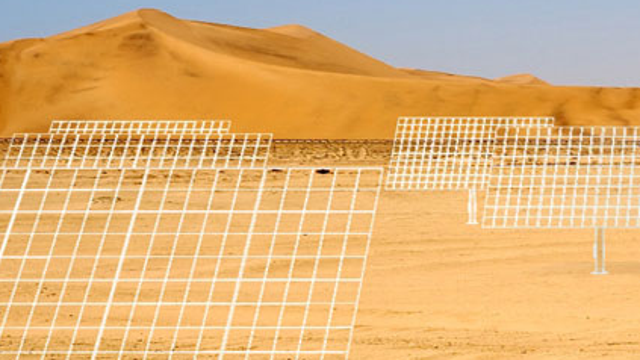Solar Cells the Size of a Pencil Point
When it comes to solar cells, bigger might not mean better.
North Carolina-based Semprius says it has produced the world’s most efficient solar cells – and they’re the size of the period at the end of this sentence.
According to the peer-reviewed journal Nature Materials, Semprius’s latest solar cells can convert 43.9% of the sun’s energy into electricity under ideal circumstances. In normal conditions, its cells are 35% efficient.
“So the solar panels that you see typically on people’s houses or on businesses are about 16% or 17% efficient -- maybe the best ones are about 20% efficient. And compared to our 35% efficient modules, that’s quite an increase,” says Semprius VP of Technology Scott Burroughs.
Once produced at a higher volume, Burroughs says Semprius’s efficient solar cells will be a lower-cost alternative to those currently on the market.
“We have a cost model that projects our current costs into the future at higher volumes, and we expect to be beating prices of Chinese flat panel modules that are being imported into the country at the moment,” says Burroughs. “We expect to be very competitive from a cost and from a price standpoint.”
Semprius has been at work on its minuscule solar cells since 2005. The company was founded by John Rogers, an applied physicist and a 2009 recipient of the MacArthur Foundation’s so-called “genius” grant. The company has raised $45 million in venture capital funding from investors such as Siemens, Applied Ventures, In-Q-Tel and Arch Venture Partners.
The next step for the company, says Burroughs, is commercializing its technology for widespread use. In 2012, Semprius opened its first manufacturing facility in Henderson, North Carolina, 45 minutes away from its headquarters in Durham.
“We’re starting to commercialize it. Right now we have 15 installations already in place around the world that are all very small installations,” says Burroughs. “Getting a foothold in the utilities space takes time. Most electric utilities want to test the technology for at least a year before they will deploy it at a large-scale plant.”
And though larger installations may be a few years away, Burroughs says the team is already thinking big.
“A major milestone would be getting to the point where we supply gigawatts’ worth of power before the end of this decade. So that will have a huge impact [for the company] as well as the planet in terms of the reduction of greenhouse gases,” says Burroughs.




















